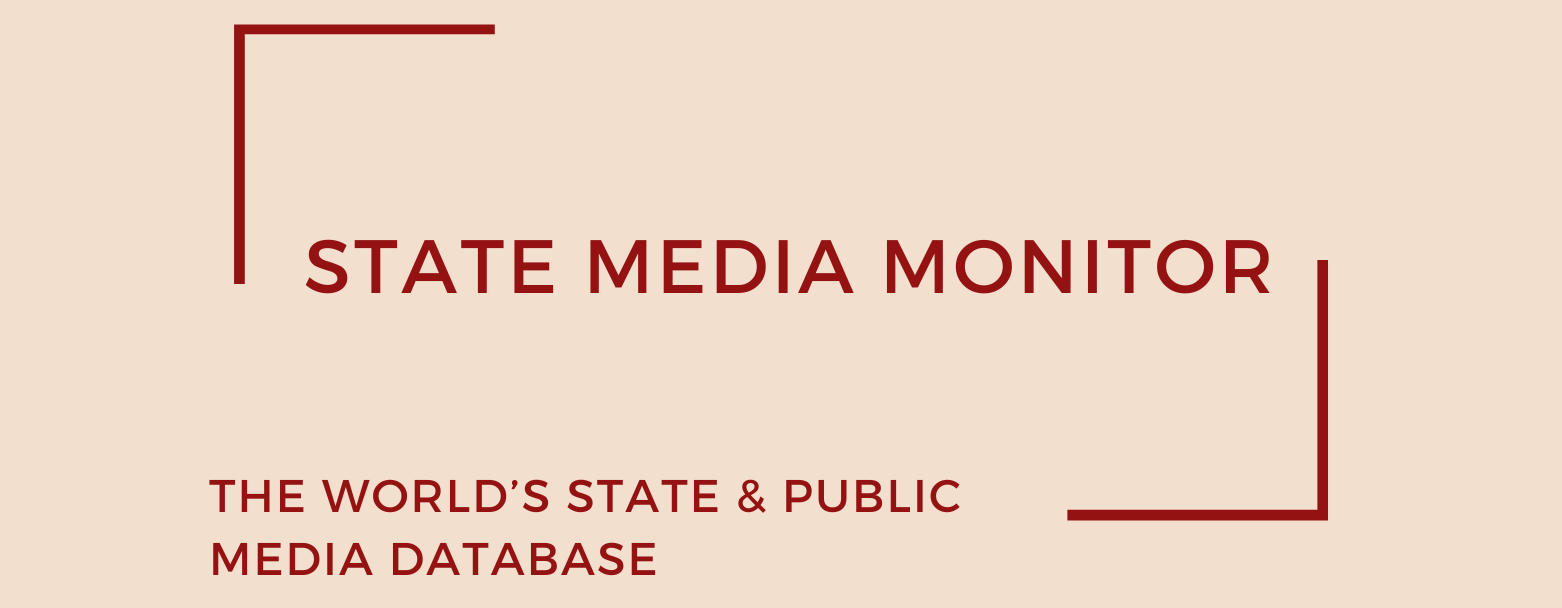State and Public Media in Sub-Saharan Africa in 2025
In Sub-Saharan Africa, government dominance over the media landscape remains overwhelming, with 96% of the region’s 137 media outlets either directly state-controlled or effectively captured by government entities. Although this represents a modest decrease of two percentage points from previous measurements, Sub-Saharan Africa still records the highest concentration of state-controlled (SC) outlets globally. In the SC category—where government influence extends across all three dimensions assessed by the State Media Monitor—the region stands as the most tightly controlled in the world.
This year’s review expanded the dataset to include four additional outlets in Tanzania and two in Gabon. It also reclassified Sidwaya, a public media outlet in Burkina Faso, from “independent state-funded and state-managed/owned media” (ISFM) to “state-controlled” (SC). The downgrade followed the collapse of proposed legislation aimed at strengthening the outlet’s governance, which would have afforded Sidwaya’s journalists greater institutional protection. As a result, only two editorially independent outlets (categorized as ISFM) remain in the region—both in Côte d’Ivoire: the Société Nouvelle de Presse et d’Édition de Côte d’Ivoire (SNPECI), a state-owned publishing house, and the Agence Ivoirienne de Presse (AIP), the official news agency.
The 2025 findings thus mark yet another step in the steady erosion of state media independence across Sub-Saharan Africa. Beyond that, this year’s findings identify a couple of trends that now shape the region more profoundly than ever.
One is the growing influence of Chinese media across Africa, which has been the subject of debate since President Xi Jinping’s outreach to African leaders under the Belt and Road Initiative. New evidence has further shown the scale and sophistication of the Chinese presence. Researchers from the University of London’s School of Oriental and African Studies (SOAS) have traced financial flows from Chinese state media organizations, such as CGTN, Xinhua, and China Daily, directed towards African outlets. These funds have been used to both disseminate Chinese news content and produce locally tailored material, often in collaboration with African media companies. The Africa Center for Strategic Studies has likewise documented the rise of the Chinese television network StarTimes, now Africa’s second-largest digital TV provider after South Africa’s DSTV, with satellite installations in over 10,000 homes across 20 countries. In parallel, under the ‘Digital Silk Road’ initiative, an increasing number of young African journalists and media executives are being trained in China, with costs covered by Chinese media conglomerates. While such initiatives are framed as partnerships, concerns persist that this expanding digital footprint serves Chinese strategic interests at the expense of African media independence and local development priorities. The State Media Monitor has also documented a growing number of cases in which African media outlets receive support from, or enter into cooperation agreements with, Chinese state-controlled media.
A second significant trend is the fragility of recent gains in African public media, where apparent improvements in editorial objectivity and financial stability often rest on precarious political foundations. In South Africa, for instance, the public service broadcaster SABC, which operates four television channels and 18 radio stations, reported a 95% reduction in operational debt in FY 2024/2025 and earned praise for balanced coverage during the 2024 general election. Yet, interviews with SABC journalists reveal that many editors and newsroom staff remain closely connected to African National Congress officials, with editorial decisions still subject to political influence and behind-the-scenes bargaining. Financially, much of SABC’s recent revenue growth came from a one-off surge in advertising linked to the launch of its digital platform, SABC Plus OTT. Its primary statutory funding source, the television licence fee, continues to collapse, with fewer than 20% of households paying as of FY 2024/2025, underscoring sustained public distrust. A government proposal in October 2023 to replace the licence fee with a direct household levy was shelved ahead of the 2024 election.
In Nigeria, an overhaul of the Nigerian Television Authority (NTA)’s executive board, bringing in locally experienced industry figures, has sparked cautious optimism over editorial reform. However, as the NTA chairman remains a presidential appointee, concerns over political influence persist. In March 2025, President Bola Tinubu appointed party officials to the role, prompting watchdogs and NGOs to warn that without an independent oversight commission, the NTA continues to serve primarily as a government mouthpiece.
The six new entries in this year’s State Media Monitor—Tanzania’s Sahara Media Group, Uhuru Media Group, IPP Media, and Azam Media Ltd, along with Gabon’s Société de presse et d’édition du Gabon (SONAPRESSE) and Gabon 24—are all either largely state-controlled or heavily influenced by government authorities in their editorial policies and news production. While the four Tanzanian outlets are, on paper, privately owned, in practice they maintain close ties to the ruling Chama Cha Mapinduzi (CCM) party. In some cases, these connections are explicit, such as Uhuru Media Group, which is directly owned by the party, while others are deeply intertwined with state enterprises and business conglomerates, functioning in effect as informal government propaganda arms.
In Gabon, SONAPRESSE and Gabon 24 serve as key state media outlets. SONAPRESSE is owned by the state and operates under the direct supervision of the Ministry of Communication, while Gabon 24 falls under the tight control of the president’s office.
Overall, apparent gains in public media freedom in Sub-Saharan Africa, whether through structural reforms, increased funding, or more balanced coverage, should be viewed with caution. Political backroom dealings continue to erode public trust, and without robust legal safeguards such as transparent budgets, independent oversight bodies, and merit-based leadership appointments, these surface-level improvements are unlikely to translate soon into a genuinely free and independent public media environment.
Read Sub-Saharan Africa Overview 2024
Read Sub-Saharan Africa Overview 2023
Read Sub-Saharan Africa Overview 2022
Read Sub-Saharan Africa Overview 2021
Citation (cite the article/profile as part of):
Dragomir, M. (2025). State Media Monitor Global Dataset 2025.
Media and Journalism Research Center (MJRC).
Zenodo.
https://doi.org/10.5281/zenodo.17219015
This article/profile is part of the State Media Monitor Global Dataset 2025, a continuously updated dataset published by the Media and Journalism Research Center (MJRC).
